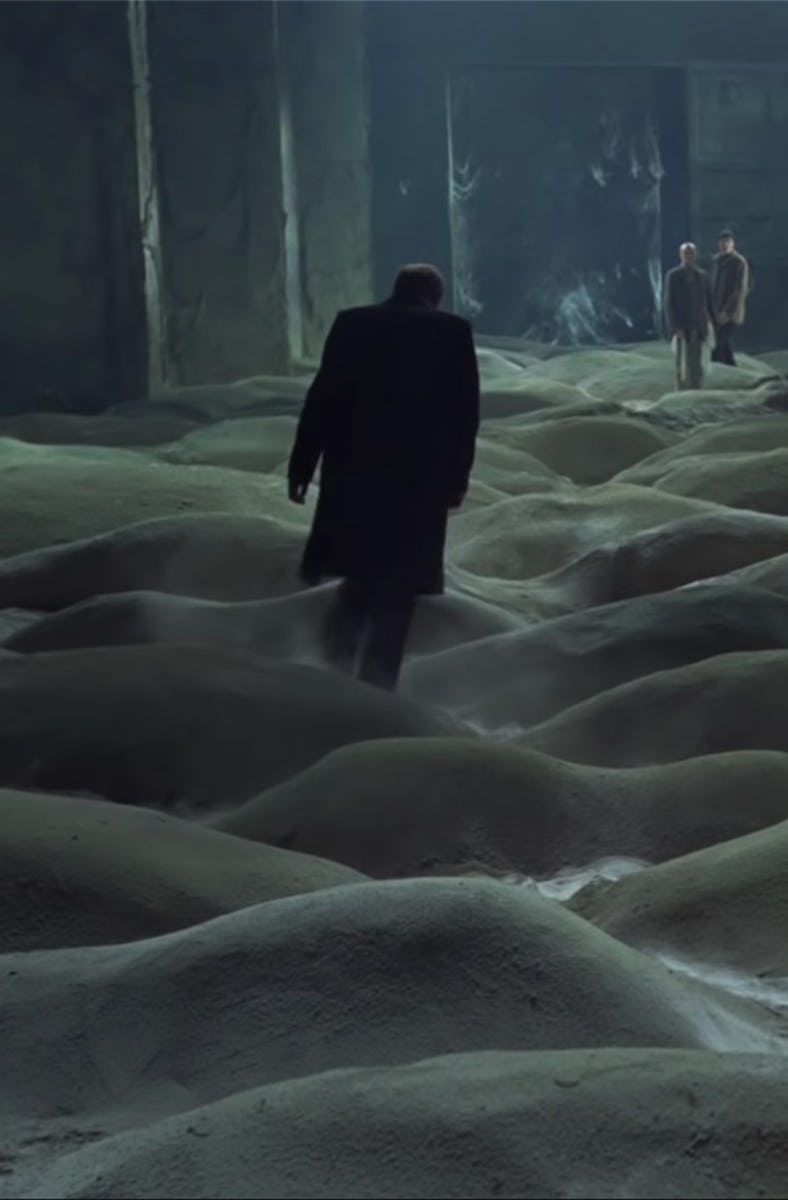With Smart Sci-Fi in Vogue, Now’s the Perfect Time to Revisit a Confounding Classic
A professor and a writer walk into a bar...

When a movie’s opening credits include “Poems by,” you know you’re in for something different. The success of 3 Body Problem and Dune: Part Two made it clear audiences are crying out for sci-fi with more on its mind than how cool spaceships are, but there’s “Spaceships are cool… but is giving Timothée Chalamet power bad?” and then there are lethargic meditations on the fundamental nature of human existence. That may explain why Hollywood hasn’t yet tried to reboot Stalker, a movie where seeing trees rustle counts as an action scene, despite its premise inviting endless reinterpretation.
Andrei Tarkovsky is not a household name, but his fingerprints are all over modern filmmaking. Solaris was remade with George Clooney, while directors ranging from Lars von Trier to Jonathan Nolan have cited him as an influence. The Soviet era filmmaker was famously ambiguous toward science fiction but also best known for making it. And Stalker, his second (and last) sci-fi film released on May 25, 1979, is routinely cited as both an all-time great and a production so troubled it may have taken the lives of some of its creators.
A very loose adaptation of the 1972 novel Roadside Picnic, the movie stars Alexander Kaidanovsky as a guide (called a stalker) who leads an aloof professor (Nikolai Grinko) and cynical writer (Anatoly Solonitsyn) into the Zone, an abandoned landscape on the fringes of an anonymous city where the laws of physics have stopped playing fair. Purportedly the product of a meteorite, anyone who survives the Zone’s deadly traps can reach the Room, which is said to grant your most heartfelt desire. Whether you know what your heart truly wants, however, is an open question.
Modern sci-fi fans will see (coincidental) similarities to Annihilation, and Stalker also inspired a cult series of survival shooter games teeming with creepiness and Eurojank. But while Annihilation is all about mutation, Stalker is about desolation. There are a few unsettling moments, but most of the Zone’s horrors are implied. The Stalker warns his charges that the Zone can disorient and destroy them, but to the viewer it’s an overwhelmingly lonely place.
You can see how that premise could inspire video games, but Stalker’s genre trappings are largely an excuse to conduct long conversations over beautiful shots of concrete ruins and rusted-out vehicles, at times making the whole affair feel like an elaborately staged play. The Writer and Professor have cold, materialist worldviews, leaving the Stalker to argue for faith and miracles as art and science threaten to exterminate them.
Assuming the ominous hallway doesn’t exterminate our heroes first.
All this conversating has been interpreted as a subtle commentary on the scars of Stalin’s gulags, a reflection on the stagnating Soviet system, a religious allegory (Tarkovsky was a devout Orthodox Christian), and even an unintentional prelude of the looming Chernobyl catastrophe, among other theories. At one point, the bitter Writer gives a speech that’s essentially Tarkovsky griping about audiences forcing their views onto art, which should warn you off of any easy conclusions. What is clear is that Tarkovsky loves the world despite our disquieting inability to understand it.
That’s a powerful message considering he survived a heart attack while making Stalker. The last film Tarkovsky directed in the Soviet Union before he became fed up with its censors and exiled himself, it was also one of his most troubled productions. If you’ve ever lost an important assignment, you’ll feel better when you learn that a year’s worth of film was improperly developed, forcing Tarkovsky to start over after begging the apparatchiks for more money.
Much of Stalker was shot in and around abandoned Estonian power plants and factories, and the film’s attempt to find beauty in those rundown settings lulls you into its dreamlike feel. Sound designer Vladimir Sharun would later theorize that toxic runoff in hellish shooting locations contributed to the premature loss of Sharun’s crewmember wife, Solonitsyn, and possibly Tarkovsky himself, who succumbed to cancer in 1986 at just 54. Throw in Kaidanovsky’s own early demise, and their quest to find hope and meaning takes on an urgent quality.
Relatively speaking.
Those existential underpinnings have influenced a wide variety of Western sci-fi, even if the lugubrious monologues of self-proclaimed spiritual successors like Westworld don’t quite grasp why Stalker works in the first place. The Zone would be infinitely less interesting if Tarkovsky drowned viewers in its technicalities; that Stalker is so open to interpretation is appropriate for a film that warns us we may never grasp our own desires. Sometimes all you need are dreamy locales, a few big ideas, and trust that your audience will fill in the rest.
To anyone raised on modern Western sci-fi, Stalker can be aching slow and obsessively disinterested in clarity. But its message — that cynicism amid decay is cowardly, not insightful — remains eternally relevant, and the moody method of its delivery, from the fog-shrouded shots of industrial scrap to the experimental soundtrack and lonely birdsong, is tremendously effective at putting you in Tarkovsky’s mystical mindset. At one point, the disillusioned Writer laments that any work that won’t last a century isn’t worth investing his time in. With Stalker celebrating its sapphire anniversary, Tarkovsky is almost halfway there.